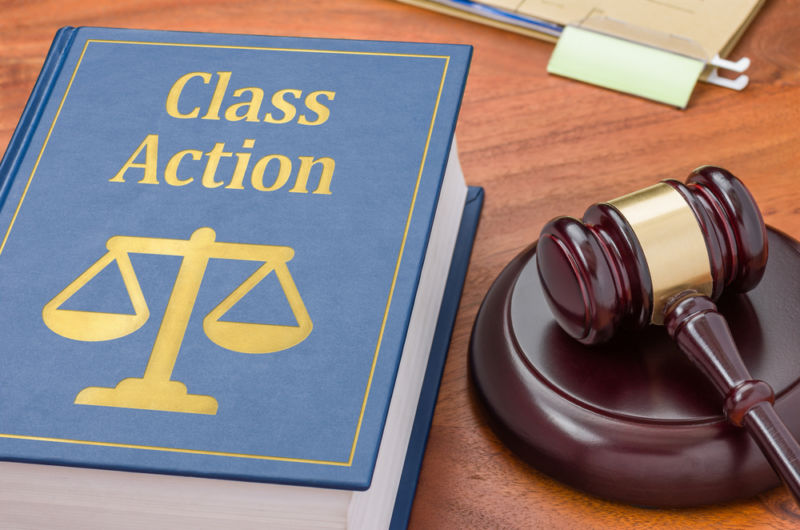Navigating Lawful Seas: Comprehending the Ins and Outs of Class Action Lawsuits
Navigating Lawful Seas: Comprehending the Ins and Outs of Class Action Lawsuits
Blog Article
Understanding Course Action Lawsuit: A Guide for Lawyers
Course activity legal actions have actually come to be an indispensable component of the lawful landscape, enabling the consolidation of multiple claims right into a solitary activity. For attorneys, comprehending the complexities of class action lawsuits is crucial in effectively representing their customers. This thorough guide explores the fundamentals of course action legal actions, from recognizing possible class members to browsing the accreditation process. In addition, it explores key approaches for taking care of class activity lawsuits and provides understandings into negotiating and getting authorization for settlements. By delving right into the details of class action claims, this guide equips lawyers with the expertise and tools needed to effectively navigate this complex location of law.
The Basics of Class Action Lawsuits
Class activity legal actions are a lawful system used to consolidate comparable claims from a group of people into a solitary claim, offering a cost-effective and efficient technique to seeking justice and resolution. This kind of legal action enables a depictive complainant, acting upon part of the entire class, to bring a claim against an accused that has actually apparently triggered injury or went against the rights of multiple individuals.
The fundamental demands for bringing a class action claim consist of numerosity, commonness, typicality, and competence of depiction. Numerosity describes the truth that the class need to be so big that joinder of all participants would be unwise. Commonality implies that there need to prevail concerns of legislation or truth that are shared by all members of the class. Typicality needs that the cases of the depictive complainant are common of the insurance claims of the entire class. Adequacy of representation ensures that the depictive complainant will sufficiently represent the interests of the entire class.
Class activity lawsuits can be helpful for both offenders and plaintiffs. For accuseds, it supplies the opportunity to effectively resolve several cases in a single suit, staying clear of the need to protect versus countless individual suits.
Identifying and Assessing Potential Class Members
After establishing the fundamental requirements for a course activity claim, the next action is to recognize and assess prospective class participants. This procedure involves determining who may be component of the course and reviewing their claims to determine if they meet the necessary requirements.
To identify potential course participants, legal representatives typically conduct comprehensive research study and gather relevant information. This might entail assessing records, performing meetings, and taking a look at records to determine individuals or entities that may have been influenced by the claimed misbehavior. It is vital to develop a clear and detailed listing of potential course participants to guarantee that all influenced parties are consisted of in the lawsuit.
When potential course members have actually been determined, the following step is to assess their insurance claims. This involves reviewing the values of each individual claim to identify if they meet the legal needs for class certification. Legal representatives must very carefully analyze the realities, proof, and legal concepts of each potential course member's insurance claim to ensure that they have a feasible case.
Evaluating possible class members likewise entails identifying whether they satisfy the course definition and have endured comparable harm as a result of the accused's activities. This calls for comparing the truths and scenarios of each possible course member's situation to the accusations and lawful concepts placed forth in the lawsuit.
Navigating the Class Accreditation Refine
To efficiently browse the course certification process, lawyers should carefully stick to the step-by-step needs established forth by the court. Course accreditation is an essential action in a class action lawsuit, as it identifies whether a situation can proceed as a class action, representing a group of people that have comparable cases versus an offender. The procedure includes pleasing specific standards, such as numerosity, commonness, typicality, and competence of depiction.
To start with, legal representatives should establish numerosity by demonstrating that the course is so large that private joinder is unwise. This can be attained via evidence or expert statement. Secondly, they need to develop commonness by showing that there prevail inquiries of regulation or reality that predominate over specific issues. This calls for a thorough analysis of the defenses and cases entailed.
Following, lawyers need to show typicality, which implies that the representative complainant's cases are typical of the cases of the course participants. This makes sure that the rate of interests of the depictive plaintiff align with the rate of interests of the course. Lastly, lawyers should demonstrate adequacy of representation, suggesting that the representative plaintiff and their advise will relatively and sufficiently stand for the interests of the class.
To browse this process effectively, legal representatives have to completely prepare by performing substantial study, gathering evidence, and establishing a compelling disagreement that satisfies each of these standards. They should also be prepared to respond to any obstacles or arguments elevated by the accused. By diligently sticking to the procedural demands stated by the court, attorneys can boost their opportunities of obtaining class accreditation and progressing the passions of the course participants.

Key Methods for Taking Care Of Class Action Lawsuits
Upon successfully browsing the class certification process, attorneys need to then apply crucial approaches for successfully handling course action litigation. These strategies are essential to make sure use this link that the case continues efficiently and successfully, inevitably making best use of the opportunities of a beneficial outcome for the course participants.
One secret method is to develop a cohesive and solid legal team (Class action lawsuit). This involves setting up a group of lawyers with expertise in course action litigation, as well as other relevant locations such as the certain industry or topic involved in the instance. A well-rounded team can bring different perspectives and abilities to the table, enhancing the general effectiveness of the lawsuits
Another crucial technique is to develop a well-thought-out and comprehensive litigation strategy. This strategy must detail the general goals of the case, as well as the specific lawful concepts and navigate here arguments that will be sought. It must likewise include a timeline and spending plan to make certain that the situation remains on track and within the allotted sources.
In addition, attorneys should proactively engage with the course participants throughout the litigation procedure (Class action lawsuit). This includes providing normal updates on the development of the case, looking for input and feedback from the course members, and addressing any type of issues or inquiries they might have. By fostering open interaction and collaboration, legal representatives can develop trust fund and support amongst the class participants, which can be important in achieving a successful resolution
Settling Class Activity Lawsuits: Settlement and Approval
When it concerns resolving class activity lawsuits, efficient arrangement and obtaining authorization are essential action in achieving a resolution. Class activity claims are intricate and entail a a great deal of plaintiffs, making it critical to reach a negotiation that is reasonable and satisfactory to all celebrations involved.

As soon as a negotiation agreement is reached, it should be authorized by the court. The court's function in this process is to make sure that the negotiation is reasonable, practical, and adequately safeguards the rate of interests of the class members. The court will think about view website elements such as the nature of the insurance claims, the stamina of the evidence, the potential recovery for the course participants, and any kind of arguments elevated by course members.
Obtaining court approval is essential as it provides finality to the settlement and shields the passions of the course members. It guarantees that the settlement is binding and enforceable, and course participants can get their rightful payment.
Conclusion

Class activity suits have actually ended up being an essential component of the legal landscape, permitting for the debt consolidation of multiple cases into a solitary action. Course certification is an essential step in a course action legal action, as it identifies whether an instance can proceed as a course activity, representing a team of individuals who have comparable claims versus an offender. By vigilantly sticking to the procedural demands established forth by the court, lawyers can boost their opportunities of getting course certification and advancing the passions of the class members.
The court will certainly take into consideration elements such as the nature of the insurance claims, the toughness of the evidence, the prospective healing for the course members, and any objections elevated by course members.
By determining and analyzing possible course members, lawyers can identify the feasibility of a course activity lawsuit.
Report this page